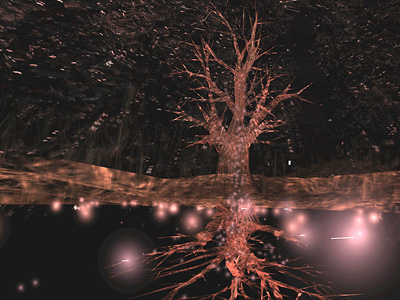Heidegger warned of technology's tendency to function as an instrument of domination laying waste to the natural world. His words resonate as I write on my laptop in the middle of a forest by the edge of the Pacific in British Columbia among sweet cedar, hemlock, fir and fern. Though encircled by a sea of noise, criss-crossed by communication transmissions, and tainted by Vancouver smog, this small pocket of ancient growth is palpably other.
Such fecund places are receding as tangible territory and as mythic elements of symbolic desire and dread. We scarcely notice the threads that ground our mortal bodies to the living earth, as our attention is diverted to hi-tech wonders, and the replacement of living non-human others with things of our own making. VR may well further the destructive trajectory which Heidegger signposted, distract from earthly crises by substituting the virtual for the real, and prove to be the nemesis of nature.
But Heidegger wrote also of an earlier techné, called "poiesis" by the Greeks, associated with a poetic bringing forth or revealing. Encouraged by his words, I have explored an alternative VR—a means of "bringing forth" subjective experiences of the natural world. My work is grounded in caring for 400 acres of semi-wild land in southern Québec, a landscape whose natural features and unseen animal presences populate the virtual spaces of Osmose and Ephémère. These works reveal a reciprocal link, un espace entrelacé, by which virtual landscape manifests my own responses to a real place.
In Osmose and Ephémère, virtual embodiment is kinesthetically explored through full-body immersion and interaction. I use participants' breath as interface (enabling them to "float"), and semi-transparency to evoke cognitive ambiguity, reaffirming the role of the subjectively lived body within the virtual realm's evocation of nature. And, while Osmose is an exploratory step, Ephémère goes further in reaffirming a poetic and mythic need for nature's otherness, returning attention to our fleeting existences as embodied beings embedded in a living and sensuous world.
This article may include minor changes from the original publication in order to improve legibility and layout consistency within the Immersence Website. † Significant changes from the original text have been indicated in red square brackets.

